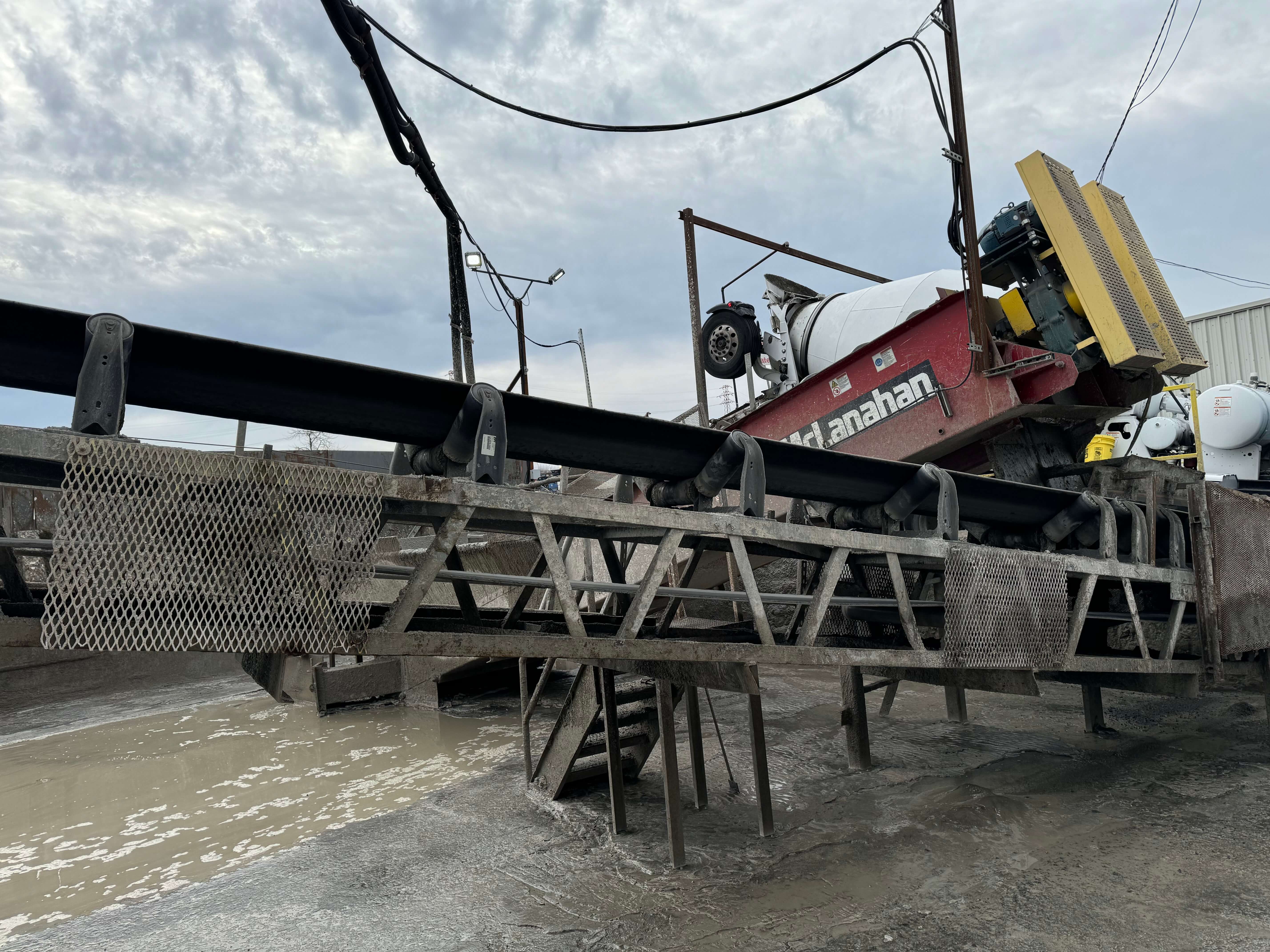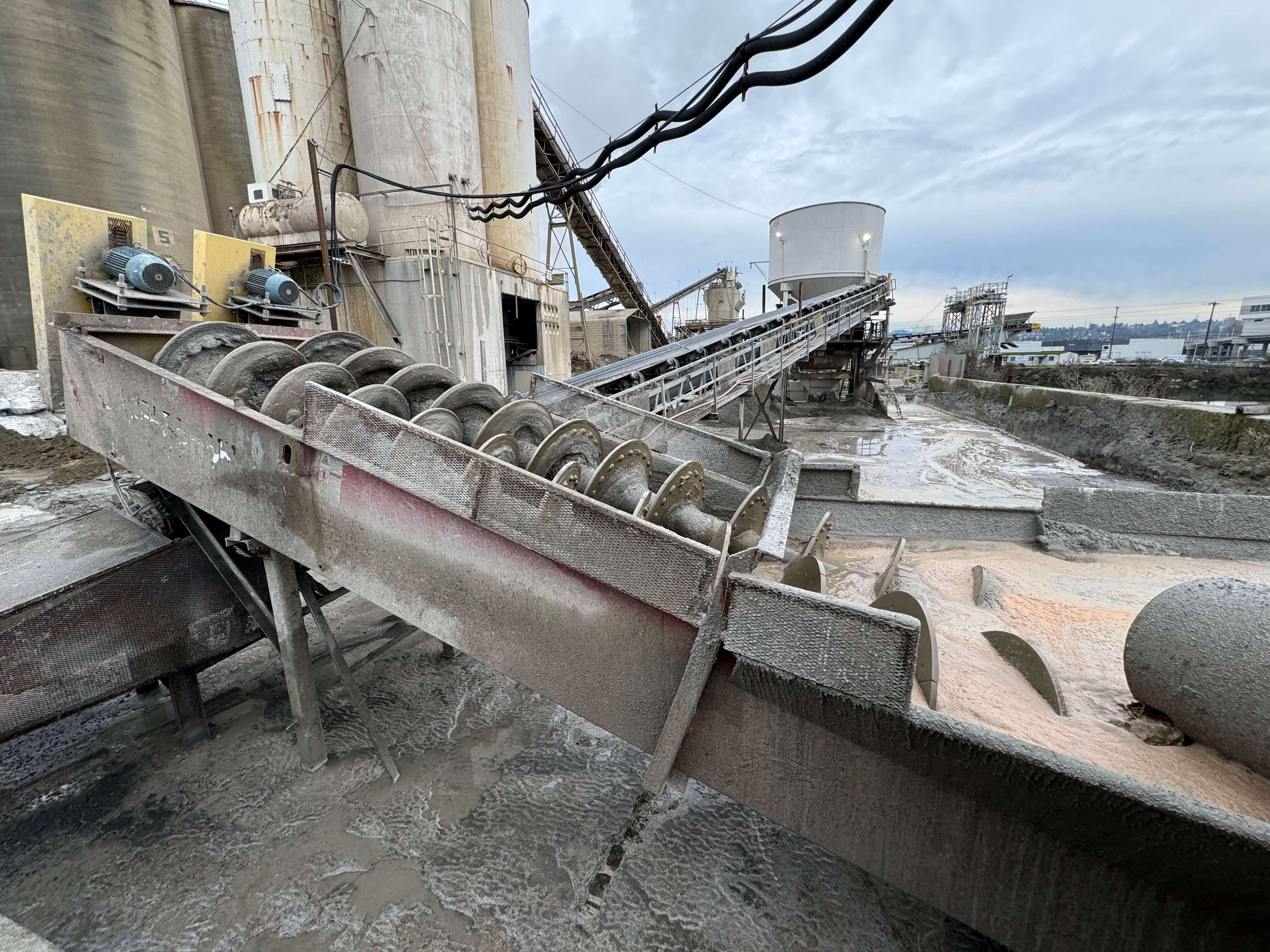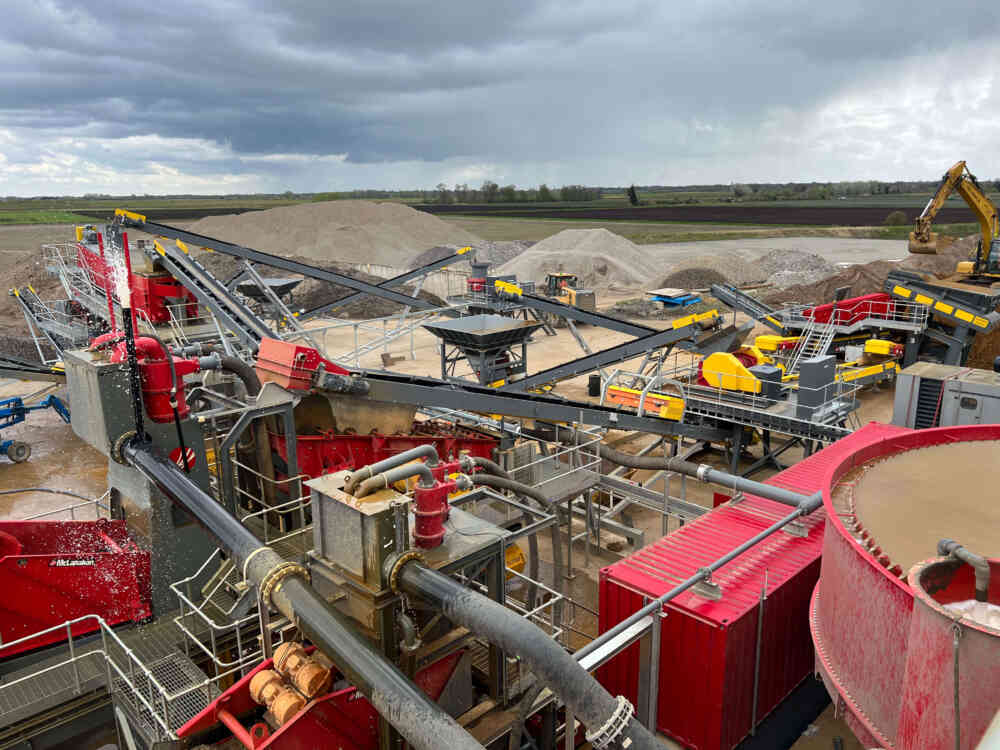Introduction
Concrete is the most widely used construction material in the world—and one of the most prominent components of construction and demolition (C&D) waste streams. From roads and bridges to sidewalks and foundations, concrete structures eventually reach the end of their lifecycle, generating significant volumes of debris.
As landfill space becomes increasingly limited and sustainability goals have become more ambitious, recycling concrete has quickly emerged as a practical and profitable way to recover aggregate while also reducing impact on the environment. This process, known as concrete recycling, plays a key role in making C&D operations more efficient and helping achieve a circular economy.
What Is Concrete Recycling?
Concrete recycling is the process of reclaiming and processing concrete from demolished structures or other construction projects for reuse. Sources for this can range from large-scale infrastructure projects such as highways and overpasses to smaller projects like slabs from driveways or sidewalk replacement.
Once collected, contaminants such as wire mesh are removed, and the concrete is crushed and screened into recycled concrete aggregate (RCA). This material can then be repurposed across a variety of applications—giving it a second life while reducing the need to extract and utilize fresh raw materials.
Why Concrete Recycling Matters
Concrete is a dense, heavy and expensive material to haul and dispose of. Without recycling it, large volumes end up in landfills, where they take a large chunk of valuable space and add to disposal costs. Producers are also benefiting from recycling concrete as they:
- Offset the need for virgin aggregates in some applications
- Decrease transportation and disposal expenses
- Comply with environmental regulations and sustainability requirements

Benefits of Recycling Concrete
Maximizes Resource Efficiency
Recycled concrete aggregate can replace virgin aggregates in applications such as road base, drainage layers, backfill, and even certain concrete mixes. This reduces dependence on finite quarry resources and helps preserve supplies for projects requiring higher-specification materials.
Reduces Carbon Emissions
Because recycled concrete often originates from nearby demolition sites, it substantially cuts hauling distances, leading to lower transportation emissions. This reuse also avoids the carbon-intensive processes associated with mining, crushing, and transporting new aggregates.
Frees Up Landfill Capacity
Concrete is one of the heaviest waste materials generated by demolition and can quickly consume valuable landfill space. Recycling diverts much of this volume, preserving landfill capacity for waste that cannot be reused.
Supports a Sustainable Construction Cycle
Concrete recycling keeps valuable materials in continuous use. Rather than following a linear path from quarry to job site to landfill, recycled concrete aggregate can be reincorporated into new infrastructure projects, extending its useful life and fostering a circular economy.

How the Process Works
Concrete recycling typically follows these key steps:
- Collection – Concrete is gathered from demolition or construction sites.
- Primary Crushing – Large pieces are broken down into smaller, more manageable sizes using crushers.
- Metal Removal – Magnetic separators or other methods remove embedded metals like rebar or wire mesh.
- Secondary Crushing and Screening – Material is further reduced and sorted into specific sizes.
- Washing and Classifying (if required) – Equipment may be used to clean the material and separate fines for higher-quality applications.
- Stockpiling – Clean, graded RCA is stored for transport to its next use.
McLanahan’s Role in Concrete Recycling
McLanahan manufactures equipment that supports multiple stages of the concrete recycling process. Crushers, such as impact crushers and hammermills, handle large pieces of concrete, reducing them to more manageable sizes.
For applications requiring cleaner, more precisely sized material, McLanahan offers washing and classifying equipment, including Fine Material Screw Washers and modular wash plants, to remove fines, dirt, and other impurities. Screening systems then sort the recycled concrete aggregate into specific gradations for different uses.
By providing solutions for crushing, separating, cleaning, and sizing, McLanahan helps operators produce consistent, high-quality recycled concrete aggregate that meets the requirements of a variety of construction applications. McLanahan Family of Companies also includes mobile equipment from Anaconda Equipment and smaller, compact solutions from RubbleCrusher.





